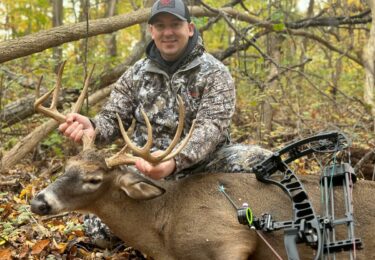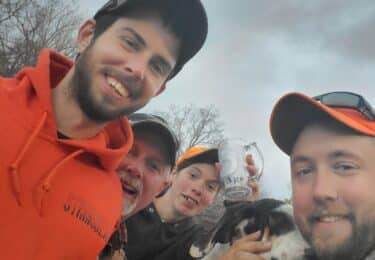The Problem with Killing Big Bucks
By: Daniel Watkins
Let’s be honest here for a second. Can you really think of anything wrong with putting your hands on a trophy whitetail; to finally take the buck that you have put your heart and soul into for the past few weeks, months, or even years? Personally, when it I tried to think of a more honorable pursuit in God’s great outdoors, I drew a blank. Taking a trophy buck requires the honing of many skills ranging from scouting, shooting, stand placement, and plenty of patience. As we all know all too well, success does not happen by accident. Much like in life (or the way life used to be) Mother Nature’s trophies are earned, not given. The hardwoods are hard-knocks: in other words, there’s no trophy (whitetails) for participation in the deer stand. However, when the hard work finally pays off, an overwhelming sense of accomplishment consumes you as the fruits (or in this case back straps) of your labor have been harvested.
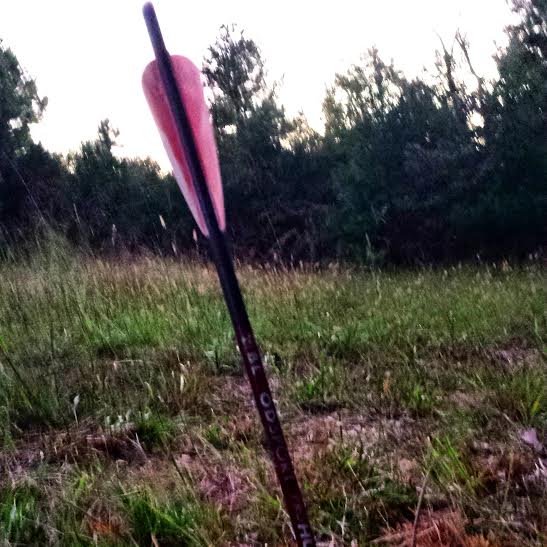
At this point, you may find yourself confused. You are probably thinking I picked a horrible title if all I was prepared to do is remind everyone that the maddening labor of whitetail hunting pays off ten-fold with due time and preparation, so let’s get down to business. If all of the former information is true, if conservation through harvest really is perfect, then where lays the problem? Who might this problem lie with?
First off, let’s tackle the usual suspects or get any preconceived notions about what the meat and potatoes of this discussion will be. Obviously, the folks at PETA will never be a fan of the blood sports. For that matter, anyone with a political agenda against hunting or the right to bear arms can fabricate some sort of “problem” with our wild game pursuits. If you are reading this I know I don’t have to give you a Biology lecture from your days back at State because you likely already know that practical evidence from the implementation of, paired with sound research of the North American model of conservation by countless entities ranging from University studies (Auburn, Rutgers, SFA, & Mississippi State for those who want to brush up) to the QDMA shows just how beneficial/effective managing for mature bucks can be. For some of us, it’s the people a little closer to home (or in it) that come to mind. Many of us tangle with the boss man at certain times of the year for time off during deer season, duck season, turkey season, and so forth. Believe it or not, your significant other may find a problem with the time or money invested on your pursuits (ladies, if your “boyfriend” has a problem with you spending time in the outdoors, give me a call).
What if I told you that the most real, tangible problem with killing big bucks didn’t come from outside the hunting community, but right in the smack dab middle of it? How would you react if I said that one of the biggest challenges hunters face today isn’t predation or disease, but other hunters? The world as we know it is getting smaller every day, both literally and metaphorically. It can be argued that available land and hunting pressure due to the sheer number of people in the woods combined with declining habitat in some areas have caused opportunities to become less available. Before tensions rise or anyone gets mad at the local business tycoons or the tax collector, let’s save that one for another day. We’re here to talk about after the shot; that moment when the pictures get taken, the memory gets made, and the bragging rights begin.
Technology can be a wonderful thing. The rise of social media in the last decade has made connecting to friends, family, and even fellow outdoorsmen from all over the world as simple as clicking a mouse or turning on the TV. On Tuesdays, you can almost bank on the fact that I’ll be sitting down to watch Mark & Terry get it done in Missouri or jot down some notes from Uncle Ted’s Tech Tips after he’s slung an arrow at anything from an aoudad to a swamp donkey. I find it extremely informative, relaxing, and entertaining to watch the industry’s best share their stories with guys like me who can only dream of their degree of success. My absolute favorite thing about the advancement of technology is when I can sort through the bogus Facebook articles with titles like “15 Things Only 90’s Kids Will Understand” or “20 Things Every 20-Something Needs to Hear”, to check out the new products from my favorite brands, see harvests from friends and keep up with industry personalities from around the country. These platforms are a wonderful way to stay connected to the outdoor community or even make new friends when used properly. Through Instagram, I was able to see the latest products from Darton Archery’s 2015 lineup, Clean Shot’s new lighted crossbow nocks, and even pictures from Lee and Tiffany’s baby shower. It’s almost like I was there (not quite, but you get it.) Crazy, right? Nah, that’s just the world we live in, the technology of the day. Well, how about the antlered doe killed in South Arkansas, or a couple of those non-typical, 20+ point triple main beamed monsters that made their way around the Twittersphere this year, surely that was the most insane thing this season?
Wrong. The most bizarre things I saw all season long were found with normal people sitting behind normal deer sharing their 2014-2015 deer harvests in the most normal way possible. What’s the problem you ask? The problem with the deer being killed was never a fault of the hunter in any way, shape or form. No one that I saw had been poaching, improper tagging, taking illegal deer or anything of that nature, yet people got burned at the stake left and right. What for? The buck (or even doe) that had just been harvested did not meet the standards of a complete stranger. On more than one occasion, I saw pre-teens, young adults, and anyone unfortunate enough to post a picture at the wrong time be rewarded with insults/swearing for what they had just accomplished. On our Instagram page, @Cervicide alone, I saw a young man criticized for the number of arrows in his quiver as he was pictured with a button buck he had just harvested; another individual used his only buck tag to cull a smaller, yet injured buck in an act of true sportsmanship and was called “bloodthirsty”. We saw Jimmy McKinney get criticized for using a crossbow to take a nice buck last day of archery season and multiple Field Staff criticized for taking pictures in their yard.
The more I began to pay attention, the more I realized just how big and widespread of a problem this was. It wasn’t something unique to our page, and it didn’t seem to matter on the age, sex, or size of the harvest. If I had a dollar for every time I read someone making snide comments to Kendall Jones about hunting caged deer or her daddy paying for her trophy hunts, I could spend the rest of my days traveling God’s green Earth chasing anything from African elephants to Colombian Blacktail. Uncle Ted seems to get question daily about why he chose to take this doe, or that half rack buck, so on and so forth even though it is well documented Ted is a meat hunter/herd manager first. Don’t even get me started on how many times I saw people say “must have been high fence” to complete strangers.
The question I started to ask myself most often this year through all of this was “When did rack size become so relevant?”
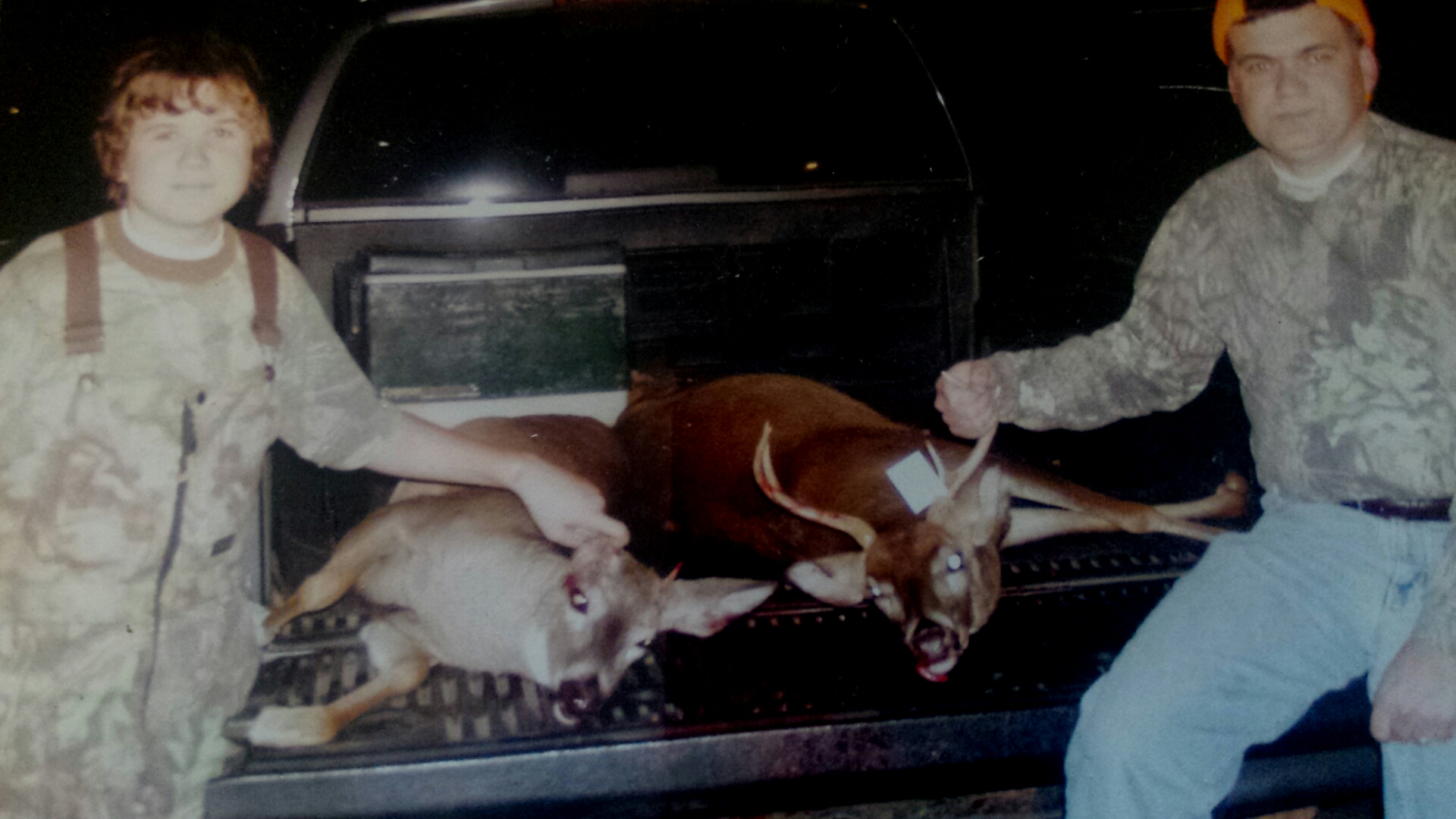 Growing up, I used to revel at the stories I heard from the outdoors as told by my grandpa, uncles, and anyone else who at home or in camp who would give me the time of day. I’d laugh when my brother told me he’d fallen asleep in the stand and dad never let me live down the first time I missed. Even today, one of the best parts about being in deer camp is swapping stories about the deer of days past, the one that got away, and giving everyone a shot at his bragging rights. In my experience with the old timers I can count on one hand how few times the conversation focused on who took the last 10 point or the biggest 8 they had ever seen. More often times than not, the stories hinged on spikes, 6 points, or that big forked horn they shot at 250 yards. The memories lie in who fell down dragging out the deer, the time they took their wife hunting, or the one that seemed to jump back to life after an attempted recovery. What I’m getting at is that if your family is anything like mine, Grandpa doesn’t have any idea what a G2 is or who holds your state’s record for a Typical Whitetail. This mentality isn’t something that’s been passed down like your daddy’s shotgun.
Growing up, I used to revel at the stories I heard from the outdoors as told by my grandpa, uncles, and anyone else who at home or in camp who would give me the time of day. I’d laugh when my brother told me he’d fallen asleep in the stand and dad never let me live down the first time I missed. Even today, one of the best parts about being in deer camp is swapping stories about the deer of days past, the one that got away, and giving everyone a shot at his bragging rights. In my experience with the old timers I can count on one hand how few times the conversation focused on who took the last 10 point or the biggest 8 they had ever seen. More often times than not, the stories hinged on spikes, 6 points, or that big forked horn they shot at 250 yards. The memories lie in who fell down dragging out the deer, the time they took their wife hunting, or the one that seemed to jump back to life after an attempted recovery. What I’m getting at is that if your family is anything like mine, Grandpa doesn’t have any idea what a G2 is or who holds your state’s record for a Typical Whitetail. This mentality isn’t something that’s been passed down like your daddy’s shotgun.
That being said, this is a problem that is extremely difficult to determine the root cause of. In some ways, it would easy or convenient to blame the rise of hunting shows and call it “Outdoor Channel Epidemic”, blaming the likes of the Lakosky’s or Stan Potts for the Boone & Crockett mentality that’s running rampant in outdoorsmen today, but that just isn’t correct. Period. At their core, hunting shows are designed as a marketing tool in which to showcase new products available from manufacturers to help reassure the consumer/viewer that a particular product can help ensure your success. In layman’s terms, it’s a business. Newsflash! It’s the people, the memories made in the field. Aside from the dollars and cents of it all, many of our favorite programs, personalities, and companies have done a fantastic job of incorporating these core family values into their workplace in order to represent what it truly means to be an outdoorsman. You want me to provide examples? Sure. One of Realtree’s mottos is “Family, Friends, & the Outdoors” and boy does it show. Bill Jordan strives to spend time with his children, working tirelessly to teach them the family business and ensure their success in life and in season.
You might think Michael is T-Bone’s favorite hunting buddy, but I’ve seen him brag on his son, Archer’s kills more times than I can count (them boys sure do love some tacos)! Many of the Drury Outdoors programs have at least one family & friends episode/segment in which members of the team get behind the camera to put their loved ones in the hot seat. Jackie Bushman and the Buckmasters pride themselves on hunting with fans through drawings/sweepstakes…I could go on and on. While proper management is almost always key to their success, many of whitetail industry elite close out the show with sincere, humble gratitude for the time they have been blessed with to do what they love with who they love.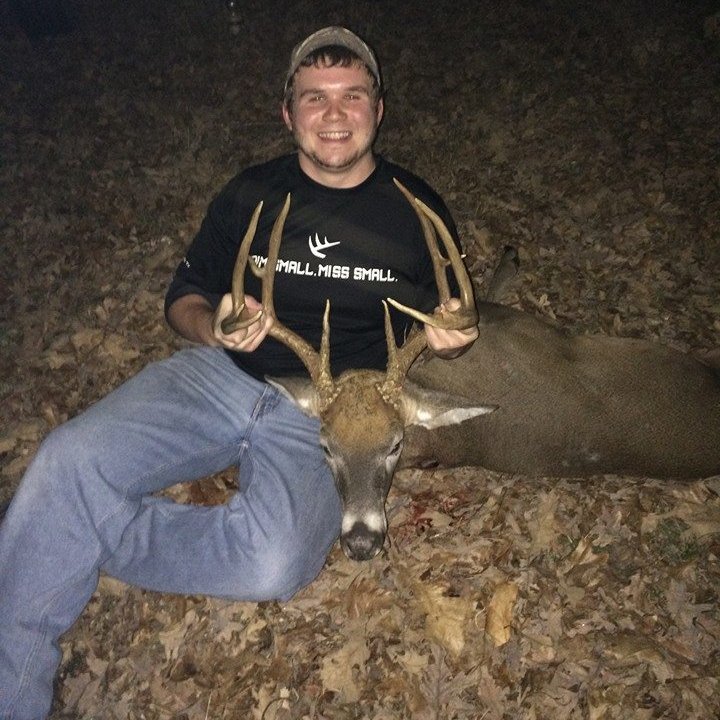
So far, this year has been one of my most successful deer seasons to date, and its sill not over! I’m actually going to try to fill my last buck tag this afternoon! To date, I have two does down and took my biggest deer to date on November 8, 2014. It was opening day in Sharp County with my Remington .308 when this beautiful 12 point measuring in 130-140 class was unfortunate enough to step in at about 10 yards. I could not be happier! Did you just find yourself saying that a buck of that caliber isn’t a trophy? Are you thinking only a true trophy is an archery kill? If so, I’m glad you’re here.
Let’s get this straight. I’m not here to tell you that you shouldn’t take a trophy or even be proud of what you’ve accomplished. This is one of those, “I’m not mad, I’m just disappointed” talks like dad used to give when you told a white lie. Truth is, if you have the time, resources, knowledge, and ability to do so, you have my utmost respect. Chances are you’ve earned what you have and it should be celebrated. Your success is something to be admired, even strived for by most hunters. The problem isn’t with you killing big bucks; it’s how you conduct yourself towards those who choose not to for whatever reason. The issue at hand is that in no way do your successes or the degree of them entitle you to be rude or critical of someone you don’t even know.
We learn from a young age that life isn’t fair. Not everyone has a big house, fancy car, or extravagant vacations in the summer. We all play t-ball, but only a handful makes the big leagues. The same can be applied to our opportunities in the outdoors. Not all of us own property, or even have hunting rights to a neighbor’s land. Some of us hunt smaller deer in Dixie, while some of us are lucky enough to sit a Kansas corn field or an Illinois River bottom. It requires hundreds, if not thousands of acres of privately managed tracts of land to truly manage a deer herd. Personally, I hunt small tracts of private land (less than 200 acres) with friends and family. It has its advantages, but is nearly impossible to exclusively manage. A good portion of us are forced to leave that up to the state Game & Fish utilizing public lands, and that’s perfectly fine.
It seems as though some of us have forgotten that life takes all kinds; that there are different strokes for different folks. Some of us hunt almost every day, while some us are only able to hunt once every couple of years. Most of us take our first deer with mom or dad in our younger years; for others it doesn’t happen until our 30’s or 40’s. As a matter of fact, the fondest memory I have afield came on November 12, 2005 opening day of Modern gun once again in Sharp County 9 years ago. Just before 5:00 as the sun was setting through the timber and my 14 year old self was losing hope, I harvested my first deer. Seconds later, not even 200 yards down the hill overlooking a cut hayfield, my dad had done the same at the age of 41. I will never forget how happy or abundantly proud I was that day for both of us, how special that moment still is to this day.
 To some, a trophy is nothing short of a 180” 5 ½ year old Pope and Young buck; to others, it’s knowing that you’ve fed your family for another few months. There’s duck hunters who like to deer hunt on the side who only have a couple to their name; there’s fisherman who won’t be caught in the woods unless its turkey season. You don’t know someone’s story or their struggle until you’ve walked in their shoes. If a 2 ½ year old 100” 7 point makes someone happy, they have succeeded. If that bothers you, it may be time to reevaluate your own priorities.
To some, a trophy is nothing short of a 180” 5 ½ year old Pope and Young buck; to others, it’s knowing that you’ve fed your family for another few months. There’s duck hunters who like to deer hunt on the side who only have a couple to their name; there’s fisherman who won’t be caught in the woods unless its turkey season. You don’t know someone’s story or their struggle until you’ve walked in their shoes. If a 2 ½ year old 100” 7 point makes someone happy, they have succeeded. If that bothers you, it may be time to reevaluate your own priorities.
The most basic step of being a good hunter is being a good human. Sure, that includes obeying the regulations, sharing your harvest, being a steward of the land. However, the foundational of being a good human is being a good neighbor. Our way of life has far too many enemies that seek to oppose and destroy our way of life without fellow hunters being discouraged from the sport. If you are going to focus your efforts on something, do if for the better of the sport; volunteer with the NRA, Ducks Unlimited, the REMF, or any of the countless other organizations working to make the outdoor experience a quality endeavor for years to come.
If you are looking for a New Year’s resolution to make yourself or your neighbor feel good in 2015, take a step back. Reminisce on those days with your dad; try to think about how good it felt to sit behind your first trophy as a young boy or girl; relive those moments that brought you where you are today. Take a child, friend, or a relative hunting. Encourage them to take a trophy they can be proud of now and the rest will sort itself out as they mature in their experiences. Conservation & stewardship are so much more than taking 150 inch 6 ½ year old bucks. Thank a fellow hunter for doing their part in preserving our way of life; encourage and advise our upcoming hunters. This is after all, a gentleman’s sport and it is not too late to take it back. United we stand, divided we fall.
Find us on Facebook, Instagram, Twitter, YouTube and Cervicide.com to share your harvests, network with us, read more blogs like this, and keep up with the team!
